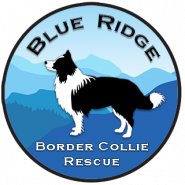TRAINING YOUR FOSTER DOG
As with canine nutrition, there is a lot of information about training, both in print and online. We ask that you use positive reinforcement but otherwise do not endorse any particular method. Be open-minded about training methods, and don’t hesitate to ask the group for help with any situation you encounter.
House Training. Often a dog from a shelter needs to be house trained. Never correct a dog if you don’t catch him or her in the act; as dogs aren’t able to connect corrections with actions that took place even a few minutes before.
Crate Training. Most dogs respond well to crate training, which provides them safe places of their own for sleeping and eating as well as allowing easier care and management, especially where multiple animals are present. Dogs are much safer in crates than loose in the house when no one is at home.
Obedience Training. Dogs from any source will often need or benefit from obedience training. It will help a dog settle into a new environment when he or she learns some basic commands. Also, you might need to teach your dog not to steal food off the kitchen counter or not to climb on the furniture. An attentive and responsive dog will also be more adoptable.
Socialization. If your foster dog is over-exuberant, you will need to teach him or her to sit for praise, instead of knocking over your visitors. Or, if you have a very shy pup, you must socialize him or her to overcome fears of strangers and enjoy visiting with your friends. Socialization efforts may include teaching your foster dog to get along with other animals as well. Pay close attention to the reaction of your new foster dog while sleeping, or even playing. Some dogs may be protective of new-found toys and beds.
Separation Anxiety. Many dogs coming into foster care will have had several changes of living situation in a short period of time, and thus may be prone to separation anxiety. This may show itself by constant barking or inappropriate chewing. You can lessen the effects of separation anxiety by “practicing” leaving before you actually have to leave. Pick up your keys and walk outside for a few minutes, then return. Lengthen the amount of time you do this, and add a short car trip. Your return after brief periods of varying lengths should help reassure the dog that in fact you will be coming back.
When you leave the house, separate the foster dog from other animals by leaving him or her in a crate or in a separate room, and provide something appropriate to chew, like a stuffed Kong toy.
Behavioral Issues. Although the dog’s traits may have seemed clear at the time of evaluation, these may change once he or she is in your household. This may be due to interactions with different ages and genders of humans and/or different kinds and genders of animals. Also, after spending some time in your home, the dog may become more comfortable, which may lead to either more relaxed behavior or to some testing of limits. A dog 12-18 months of age also may experience “dog adolescence.”


